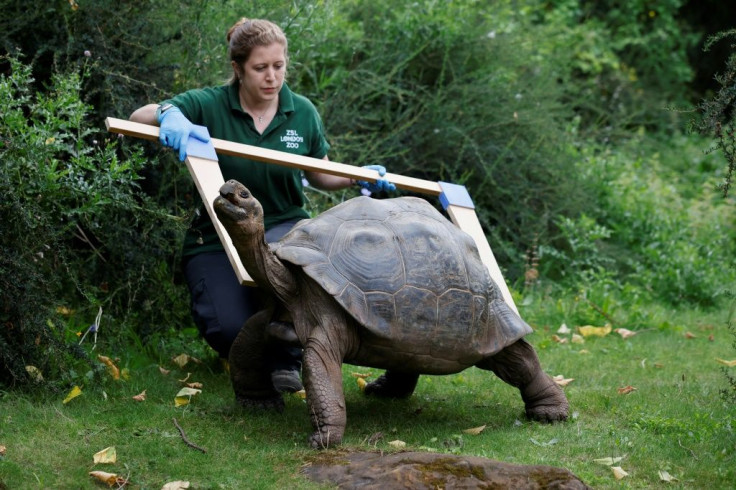Ecuador Proposes Debt Swap To Enlarge Galapagos
Ecuador proposed Monday to enlarge the Galapagos nature reserve, famous for its giant tortoises, by some 60,000 square kilometers and finance it with a debt swap.
President Guillermo Lasso announced the move at the COP26 climate summit in Glasgow.
The Galapagos, an archipelago located 1,000 kilometers (600 miles) off the coast of Ecuador, takes its name from the gigantic tortoises that live there.
The islands were made famous by British geologist and naturalist Charles Darwin's observations on evolution there.
They host a reserve of some 130,000 square kilometers (50,200 square miles), the world's second-largest and home to some 2,900 marine species. It is listed as a Natural World Heritage Site.
On Monday, Lasso said another 60,000 square kilometers would be added to the marine reserve established in 1998.
It would expand northward to include the Cocos Ridge, and would entail a ban on industrial fishing as well as subsistence fishing in some areas.

The move should be financed, Lasso said, by a "debt-for-conservation swap."
Such transactions entail forgiving part of a developing nation's debt in exchange for local investment in conservation programs.
Ecuador is in an economic down-spiral that has been aggravated by the coronavirus pandemic, with external debt at almost $46 billion, or 45 percent of GDP.
The country of 17.7 million people has seen recent protests against soaring fuel prices as the government cuts subsidies as required by the International Monetary Fund to reduce spending in exchange for loans.
"We estimate that this will be the highest amount for a debt swap so far in the world," said the president.
"We will be very careful to evaluate each of the proposals in order to maximize the effects of conservation," Lasso added.
According to Ecuador's central bank, some 15.6 percent of the country's debt is owed to other countries, including England, Spain and the United States.
The International Union for Conservation of Nature says protected areas play a vital role in climate change mitigation by limiting planet-warming greenhouse gas emissions and shielding communities from the worst impacts.
© Copyright AFP 2024. All rights reserved.











